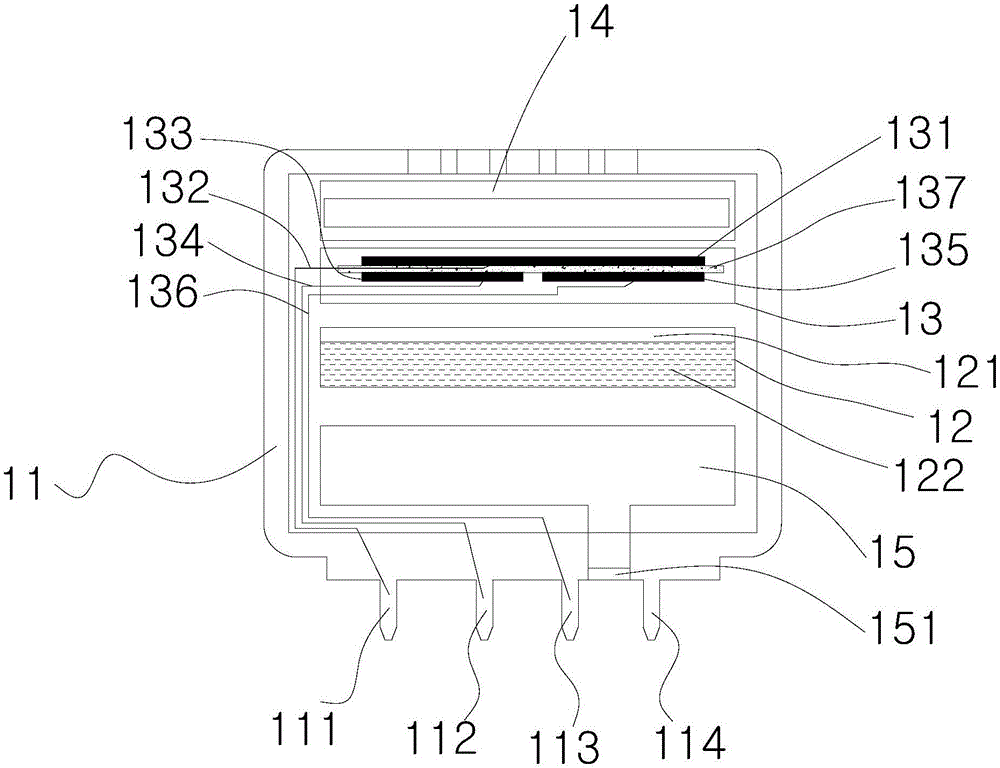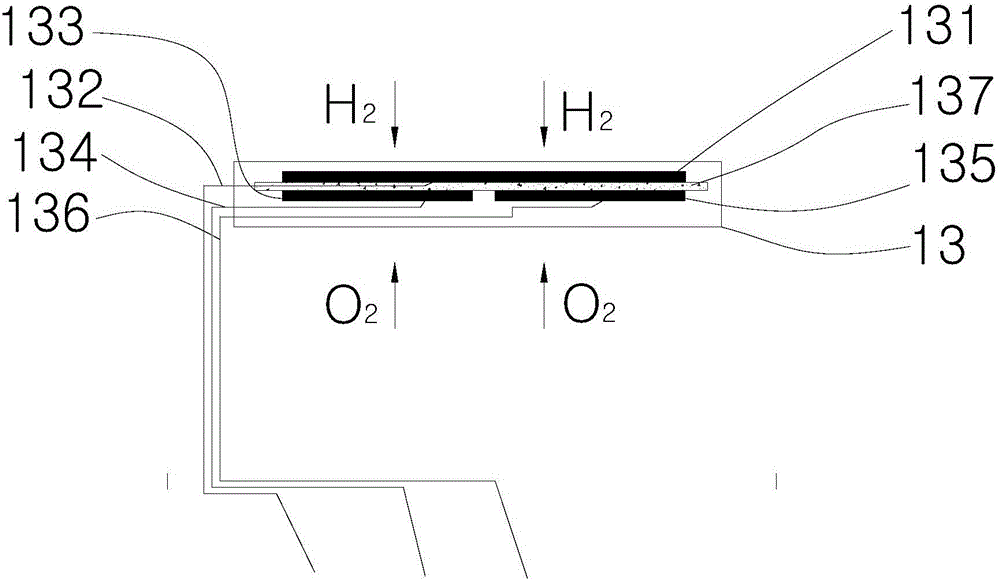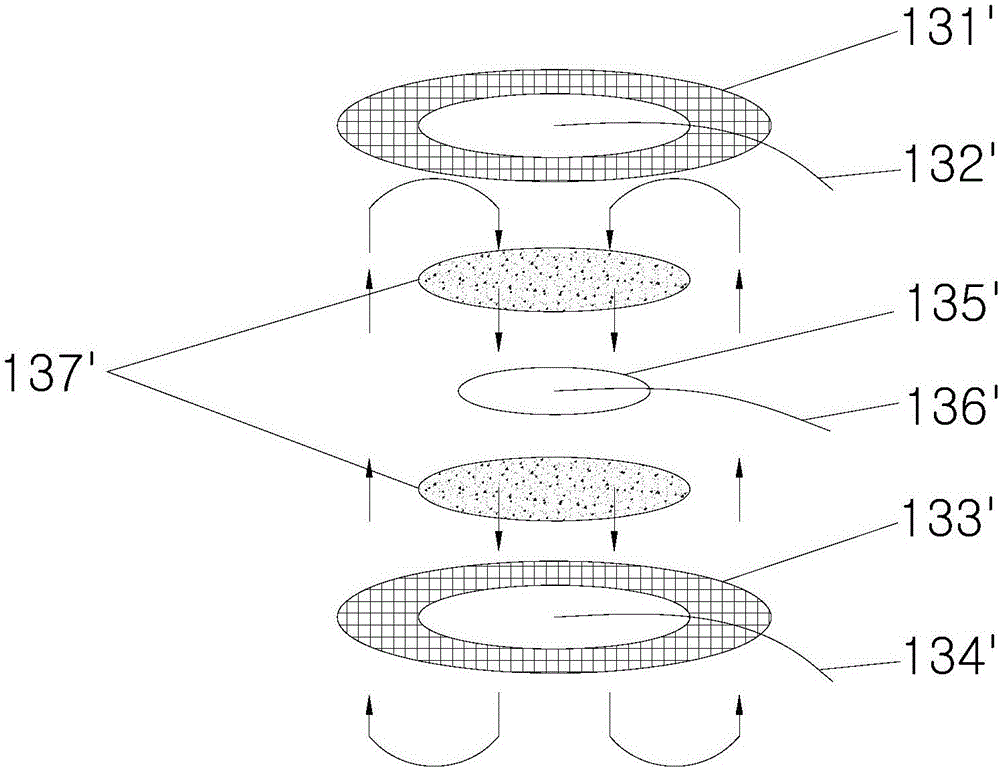Hydrogen sensor
A sensor and sensor housing technology, applied in the field of sensors, can solve the problems of inability to function, the electrode is separated from mass transfer, the electrolyte is dry, etc., to avoid poor contact, increase the contact area, and improve the response speed.
- Summary
- Abstract
- Description
- Claims
- Application Information
AI Technical Summary
Problems solved by technology
Method used
Image
Examples
Embodiment Construction
[0025] In order to have a clearer understanding of the technical features, purposes and effects of the present invention, the specific implementation manners of the present invention will now be described in detail with reference to the accompanying drawings.
[0026] Such as figure 1 As shown, in the hydrogen sensor of the present invention, it includes a sensor housing 11, a gas reaction center 13 arranged in the sensor housing 11, and the gas reaction center 13 includes a working electrode 131, a counter electrode 133, a reference electrode 135 and an electrolyte 137 , the electrolyte 137 is a solid electrolyte, and the working electrode 131 , the counter electrode 133 , and the reference electrode 135 are all fixed on the electrolyte 137 .
[0027] The sensor housing 11 serves as a protective support for the entire sensor, and is connected to the external PCB board and the internal gas reaction center 13 through the pins 111, 112, 113 at the bottom of the sensor, and trans...
PUM
 Login to View More
Login to View More Abstract
Description
Claims
Application Information
 Login to View More
Login to View More - R&D
- Intellectual Property
- Life Sciences
- Materials
- Tech Scout
- Unparalleled Data Quality
- Higher Quality Content
- 60% Fewer Hallucinations
Browse by: Latest US Patents, China's latest patents, Technical Efficacy Thesaurus, Application Domain, Technology Topic, Popular Technical Reports.
© 2025 PatSnap. All rights reserved.Legal|Privacy policy|Modern Slavery Act Transparency Statement|Sitemap|About US| Contact US: help@patsnap.com



